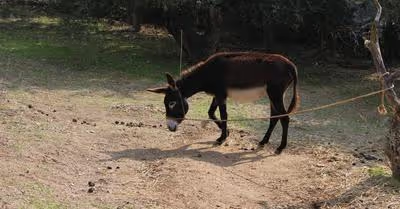Table of Contents
Eagle Species
Eagles help the environment and ecosystems they are a part of in two ways; they eat dead animals, which helps keep the environment clean. They also tend to hunt weak or sick animals, leaving behind only the healthiest animals that are more likely to survive.
However, with over 60 different species of eagles found around the world, answering how much an eagle weighs is not as straightforward. Keeping that in mind, here, we will take a look at the most famous species of eagles and how much they weigh.
The Bald Eagle
First on the list is, of course, the bald eagle. In the United States, the bald eagle is the most well-known eagle (and maybe bird). As the country's national bird, this beautiful species is one of the largest eagles on the planet.
What's more perplexing is the size of the nests they construct. The nest of a Bald Eagle may be up to 13 feet deep and 9 feet broad, which is enormous for a bird. The nest may also weigh up to a metric ton.
The weight of this eagle species fluctuates based on their latitude and gender. Males from the same location weigh around 25% less than females from the same area. A female bald eagle's typical weight is 10-14 pounds; however, this varies greatly depending on where the eagle hails from. The bald eagles in the south are often smaller than those in the north.
Female eagles in Alaska, for example, can reach up to 18 pounds, whereas eagles in Florida can only weigh 7-8 pounds. The female bald eagle is typically 25% bigger than the male, measuring 35 to 38 inches in length.
Golden Eagle
Golden eagles (Aquila chrysaetos) are found all over the world. They may be found throughout Eurasia, northern Africa, and North America. Golden eagles may be found throughout the western part of North America, from Alaska to central Mexico. Golden eagles may be found in open and semi-open environments from sea level to about 12,000 feet above sea level.
Golden eagles are mostly found in hilly locations, although they also nest in wetlands, riparian areas, and estuaries. They are the biggest predatory birds in North America and possess long, wide wings and a dark brown color. Males and females seem alike; however, females are much bigger than males. Golden Eagles weigh around 14 pounds, depending on their gender.
The Crowned Eagle
The crowned eagle is Africa's most powerful eagle. While they aren't the largest eagles in Africa, they are the strongest. Their legs are large, and each rear toe has a large talon that aids in the killing of creatures four times their size. Crowned eagles may be found in Africa's thick rainforests.
They can also be found in Africa's savannas. Their long tail aids in navigation, similar to how a rudder helps in boat navigation. The eagle can effortlessly soar between the branches because of these characteristics.
The crowned eagle is capable of killing animals weighing up to 44 pounds. The long hind talon of the eagle aids in the breaking of the prey's spine. Sitting on a tree then dropping down on the game is a popular hunting technique. A crowned eagle hunts monkeys by flying over the forest canopy.
Before striking, the eagle lands on a limb and attempts to get as near to the monkeys as possible without being noticed. The weight of this bird varies between 7 and 10 pounds.
Martial Eagle
A bird of prey native to Sub-Saharan Africa, the Martial Eagle is a raptor. Polemaetus is the only eagle species in the world that belongs to the genus family Polemaetus. It's classified as an eagle-booted subfamily Aquillinae species. However, this is one of the most powerful booted eagle species, with the term booted eagle deriving from the bird's boot-like legs.
Unfortunately, livestock owners have attempted to remove these eagles due to their propensity for attacking and killing cattle. However, throughout the years, the amount they destroy animals has been greatly exaggerated. This eagle is 9 to 14 pounds in weight.
Wedge-Tailed Eagle
The Wedge-tailed Eagle is the biggest bird of prey in Australia. The Wedge-tailed Eagle may be found anywhere in the Alps, from sea level to alpine areas, but favors wooded and forested territory and open country, avoiding coastal heaths or rainforests.
The eagles can be observed perched on trees or poles or flying up to 6500 feet in the air. The nest of the wedge-tailed eagle is built in a prominent site with an excellent view of the surrounding area. It can be made in a live or dead tree, but the tallest one in the area is generally used.
Farmers used to believe that eagles swooped down and took lambs away in their talons; therefore, they were considered a threat. As a result, farmers poisoned and-or shot thousands of these eagles. Wedge-tailed Eagles are now known to consume predominantly rabbits and only rarely lambs – generally the carcasses of dead lambs rather than live ones.
Despite being a federally protected species, these gorgeous raptors are nevertheless shot and poisoned in some regions of Australia. Wedge-tailed eagles weigh anywhere between 3 and 13 pounds.
Steller’s Sea Eagle
Peter Simon Pallas described the Steller's Sea Eagle for the first time in 1811. It is the world's heaviest eagle on average. It may not be the largest eagle ever, but it surely ranks first among the eagles still alive today. This eagle is huge compared to other species, weighing between 11 and 20 pounds on average.
It lives around the coasts of northeastern Asia and feeds on fish and waterfowl. A sizable population of Steller's Sea Eagles has also been reported in far Eastern Russia. Around 4,000 of these birds reside in the area, according to researchers.
Harpy Eagle
Although few people have seen a harpy eagle in its natural environment, it looks mythical. This dark gray raptor has a striking appearance, with feathers on top of its head that flare out into a prominent crest when the bird feels threatened. Similar to owls, harpy eagles have several tiny gray feathers that form a face disc. This helps concentrate sound waves that help the bird hear better.
The female "harpy," like other eagles, is about twice as big as the male. The harpy eagle's legs may be as thick as a small child's wrist, and its curved rear talons are 5 inches long (that's longer than the claws of a grizzly). The harpy is unquestionably the heaviest and most powerful of all the eagle species, weighing up to 20 lbs.
Recent Articles
















